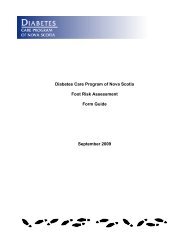CDE Appendix 1 Literature Review - Central East Local Health ...
CDE Appendix 1 Literature Review - Central East Local Health ...
CDE Appendix 1 Literature Review - Central East Local Health ...
Create successful ePaper yourself
Turn your PDF publications into a flip-book with our unique Google optimized e-Paper software.
The Culture, Diversity and Equity Project: <strong>Literature</strong> <strong>Review</strong><br />
HIA methodologies involve both community/stakeholder consultation and more ‘expert’-based and derived<br />
assessments of the research evidence.<br />
Among the many benefits of <strong>Health</strong> Equity Impact Assessment are:<br />
• Its heightening of awareness and reflexivity among policymakers as to the impact of their policies on different<br />
social groups and the value-ladenness of the policymaking process.<br />
• Its proactivity - health-disparity-prevention and health-promotion potential - in enabling assessments of<br />
unintended health impacts of proposed policies on health disparities prospectively. It also enables the<br />
consideration of ways to enhance health equity promoting factors when weighing or revising policy options.<br />
• Its mainstreaming of health equity considerations as part and parcel of all policymaking processes<br />
• Its evidence-basis and emphasis on the rigorous use of evidence regarding actual or potential health equity<br />
impact. It also generates data for future program/service reform and strategic development and policymaking.<br />
• Its emphasis on consultation with affected stakeholders and empowerment of marginalized groups in the<br />
assessment process (which also facilitates knowledge-exchange).<br />
• Its potential to increase the transparency and public accountability of decision-making processes through public<br />
involvement and public reporting of results of impact assessments (as is the practice in the UK).<br />
The scope of health equity impact assessments have been expanded in some jurisdictions to include an assessment of<br />
not only policies, but also programs, services, projects, and budgeting and allocation processes. The City of Toronto<br />
has for instance developed an ‘equity lens’ and requires that equity impact statements be included in City Reports<br />
and budget allocation processes.<br />
<strong>Health</strong> impact assessments have also been used in Sweden, England, and the Netherlands to screen and assess<br />
legislation, policies and initiatives in other sectors that are likely to have a direct or indirect effect on health and<br />
health inequalities (see for instance WHO, 2008, p.115 and London <strong>Health</strong> Commission, 2008 for examples of such<br />
broader uses of health impact assessments by the London <strong>Health</strong> Commission across policy sectors). HIAs have also<br />
been commended for their potential to promote intersectoral collaboration through such intersectoral evaluation<br />
processes.<br />
94

















